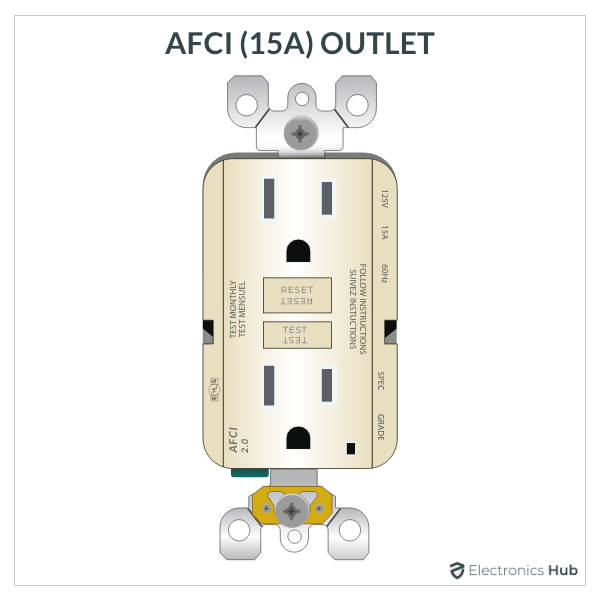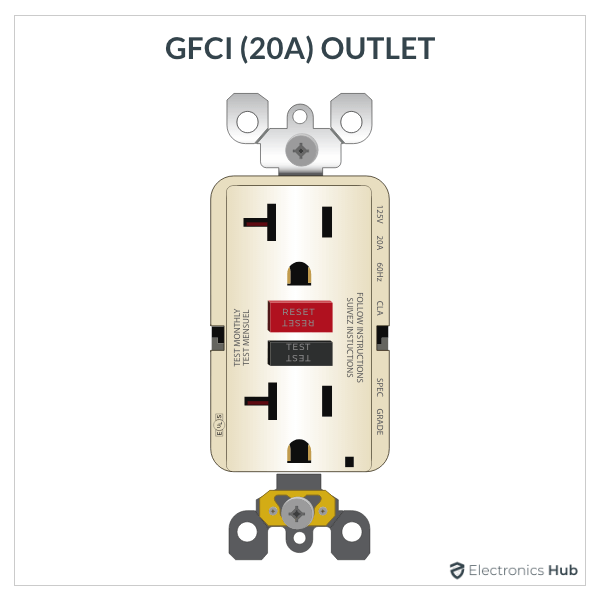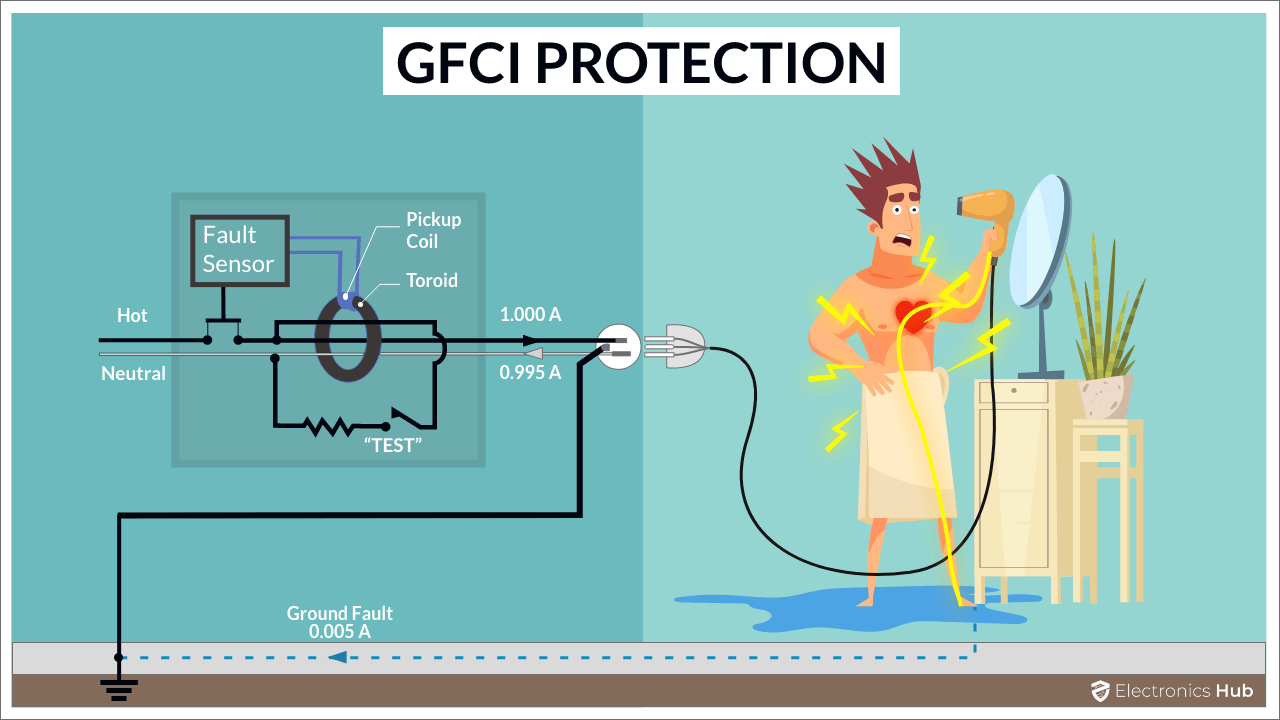What is AFCI?
AFCI is short for Arc Fault Circuit Interrupter. As the name suggests, it senses arc faults that have the potential to start a fire and respond by breaking or interrupting the circuit.
An arc fault occurs when electricity flows through an unintended path. One of the main reasons for the cause of electrical arc is if there is a line to neutral fault. An AFCI senses arcing and instantly disconnects the circuit before it builds up any heat. If there is enough heat, then it can melt wires and start a fire. Electrical Arcing is a major reason for causing electrical fires in homes. You might have seen a small arc while unplugging a device. These arcs are relatively more harmless than the arcs that occur in electrical wiring. If the intensity is high, the heat will melt wires and ignite nearby combustible objects. There are several types of AFCI devices.
Combination AFCI Branch / Feeder AFCI AFCI Outlets Portable AFCI Cord AFCI
Of these, the combination type AFCI Breakers are very common. Their size is similar to regular breakers (and even GFCI Breakers). As per the National Electric Code (NEC), new homes require AFCI breakers (Combination AFCI) on all branches. Some locations where you need to install AFCI are:
Bedrooms Living Rooms Dining Rooms Family Rooms Libraries or Dens Hallways Other similar rooms
What is GFCI?
You might be more familiar with GFCI as they are very common (at least in most modern homes) in bathrooms and kitchens. GFCI stands for Ground Fault Circuit Interrupter.
So, the immediate question you might have is, what is a Ground Fault? It is an electrical fault where the electric current takes an unintended path to ground other than the neutral wire. Imagine there is a loose hot wire from a faulty electrical appliance (a hair dryer for instance). If you accidentally touch the hot wire, the electricity flows from the hot wire, goes through your body, and then to the ground. This gives you a severe electric shock and can be fatal. A GFCI is a special device that always measures the outgoing current through the hot wire and also the incoming current through the neutral wire. If it is not the same, then it detects something is wrong (as in the current is taking another path to the ground) and immediately opens the circuit. Thus, saving your life. Modern residential GFCI devices can detect a fault current as low as 5mA.
GFCIs are available as outlets as well as circuit breakers. Outlet-type GFCIs are very common in bathrooms and kitchens. Nowadays, many new homes have GFCI Breakers in order to protect the entire house from ground faults. Here are some important locations in your home where you need GFCI protection:
Bathrooms Kitchens Crawl Places Garages Laundry Basements All “possible” wet places
Comparison of AFCI vs GFCI
Let us now see a quick side-by-side comparison of AFCI vs GFCI
Dual Function AFCI GFCI Breakers
Yes. That’s right. You can get circuit breakers that have the dual function of AFCI as well as GFCI. They provide protection against arcing and ground faults. Dual Function AFCI/GFCI breakers are available in 15A or 20A ratings. You can use these breakers where you need both AFCI and GFCI protection such as in kitchens and bathrooms. Note that Dual Function AFCI/GFCI are different from Combination AFCI Breakers.
Which Breaker to Use, AFCI vs GFCI?
We recommend you use both these safety devices in your house. One detects arcing and protects your home by preventing an electrical fire. The other detects ground faults and protects you from electric shock. The good thing is you can combine them if you like. For instance, a combination of AFCI breakers and a GFCI Outlet will work perfectly as the operation of AFCI will not interfere with that of the GFCI. The other combination is also good i.e., GFCI Breaker with AFCI outlet. Although this is a very rare combination. As Dual Function AFCI/GFCI are relatively cheap, you can use them as well. A 20A Dual Function AFCI/GFCI Breakers costs about $55.
Conclusion
AFCI and GFCI are two basic electrical safety devices that we use in our homes. AFCI is responsible for detecting arcs that have the potential to start fires and break the circuits. GFCI on the other hand detects ground faults (a fault where the electric current takes another path to the ground than neutral) and interrupts the circuit. This saves you from electric shock. In this guide, we saw the basics of AFCI and GFCI. After that, we saw the differences between AFI vs GFCI. We also saw the important areas where we have to use AFCI and GFCI devices. If you are constructing a new house or renovating electrical work, please do consider these essential electrical safety devices to be a part of your installation or upgrades. Comment * Name * Email * Website
Δ








![]()